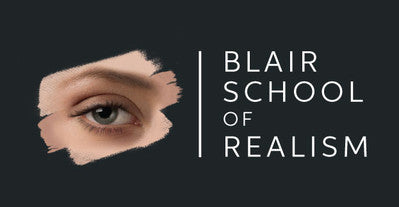The perpetual debate over what constitutes "good" art usually comes down to skill (execution) vs idea (concept).

A skill is proficiency, facility, or dexterity that is acquired or developed through training or experiences, usually manifested and applied in the physical word by an action.
A concept is that which occurs in the mind, in speech, or in thought. It is understood to be the fundamental building blocks of thoughts and beliefs. Concepts are considered abstract ideas or general notion.
At one extreme are artists who use observational skills and brush skills to re-create reality with painstaking exactitude and planning, emphasizing quality and beauty. Their goal is to celebrate the aesthetics of vision, and they often use traditional materials and methods.
With the airbrush, the time required to achieve proficiency varies, depending on the individual and the quality of practice, not the amount of practice. Lots of people think that the amount of practice is key, but studies have demonstrated that quality far outweighs quantity when it comes to results.

Between the Sierra Nevadas by Albert Bierstadt
At the other end are artists who value ideas and concepts and interpretive thinking over aesthetics and technical skill. They may choose to remove the subject completely if it doesn't serve their work. Their goal is to push the boundaries, often to elicit an emotional response or to provoke thought.

One and Three Chairs by Joseph Kosuth
The Power of Skill
Skill in art is akin to the mastery of a craft – the ability to manipulate materials, wield tools, and bring forth a visual or auditory spectacle that captivates the audience. Traditionally, artists have undergone rigorous training to refine their techniques, whether in painting, sculpture, music, or any other form. Skill, when well-honed, allows an artist to translate their visions into tangible, aesthetically pleasing works.
Technical prowess can be seen in the intricate brushstrokes of a painter, the subtlety of an airbrush work, the harmonious composition of a musical piece, or the precision of a sculptor's chisel. Skill provides the foundation upon which artistic expression is built, allowing artists to communicate their ideas with clarity and finesse. It is the craftsmanship that brings a concept to life, giving it a tangible form that resonates with the observer.
The Essence of Concept
On the other hand, the conceptual aspect of art delves into the realm of ideas, emotions, and intellectual engagement. A strong concept is the driving force behind a piece of art, infusing it with meaning and depth. Conceptual art challenges viewers to think, question, and explore the narrative embedded within the work. It often transcends traditional boundaries, pushing the boundaries of what is considered "art."
Conceptual artists prioritize the underlying message or idea, often placing less emphasis on traditional techniques. This approach encourages a departure from the conventional and invites the audience to interact with art on a more intellectual and emotional level. The power of a concept lies in its ability to provoke thought, spark conversations, and challenge societal norms.
Opposing sides
At one end of the spectrum, the word "skill" is interchangeable with "art" by the conservative traditional artists, who often measure the success by the ability to create a resemblance to the subject. This group holds beauty as the highest standard in painting, and views conceptual art as ugly, tasteless, and lacking in quality.
At the other end, conceptual artists reverie idea and innovation, and see the development of skills as a waste of time. They regard technique as a craft, much like a tradesperson, such as a bricklayer, or mechanic. Additionally, they view accurate paintings as "soulless," and boring, often asking "what is the point to copying what we see?"
Conceptual art began to be embraced by the modernist teachers in the 70s, which already had tossed aside traditional methods and techniques. Some art schools discarded skill-based learning altogether, and many students graduating from schools such as Goldsmiths in the UK seem to have limited or no technical skills.

From the Goldsmiths Art School undergraduate exhibition 2016
The problem with the conservative artist is that while they focus on accuracy, they often forget everything else, and to the point of the conceptualists, the result is often boring. Take a painting of a manhole cover for example. No matter how well-rendered, the manhole cover will probably not engage the viewer for more than a few seconds.

Would you hang this manhole cover on your wall if it was a painting? Skillful execution alone will not be enough to make your paintings sellable.
While conservative artists disdain conceptual art, they must understand that skillful rendering does not guarantee a good painting. Presentation, composition, and (especially) subject all matter. Adding a concept or meaning to the painting can elevate it from good to great.
On the other hand, conceptual artists forget that skill or technique is the vehicle which carries the idea. Without it, the visual artist is handicapped. Conceptual artists also overlook aesthetic concerns which can result in ugliness.
Find your own way?
Conceptual artist teachers often insist that a student should not follow the teachings of others, imitate styles, or seek to learn copying skills, because they feel that it is a waste of time, and will inhibit artistic growth, The want the student to find their style.
I have two problems with this.
One, if a student enjoys painting in the style of William Waterhouse, why is that a problem? Many people paint for pleasure, not to appease a client or instructor.
Two, there is no evidence that copying the work of others has any negative impact on artistic development. Quite the contrary. The old masters employed visual tricks and effects that are not evident until you try to reproduce a painting. A student can increase his or her understanding of how to achieve effects by practicing in such a way, then they can apply this knowledge to new subjects.
All art is an interpretation
I often hear that photorealists don't interpret. They copy what they see. Nothing could be further from the truth. Even a photorealist interprets, and the "hand" of the photorealists is often noticeable in their work, even though they may be unconscious of it.
Noteworthy is how students in a photorealism class have different results, even though everyone has the same goal. I used to believe that this was a factor of varying degrees of experience, but upon closer examination, I realized that I was observing unconscious styles creeping into the works. This is not necessarily a bad thing, because even though the results varied, they all resembled the subject.
Varied student results from two of my workshops using the exact same colors and reference. Visible is a slightly different interpretation.
Which do you need?
While the debate often centers around skill versus concept, the most compelling works of art often emerge from a harmonious integration of both elements. Skill acts as a conduit through which concepts are communicated, elevating them beyond abstract thoughts into tangible, perceptible forms. In turn, concepts infuse skill with purpose and significance, guiding the artist's hand towards a specific narrative or message.
In the ever-evolving landscape of art, the dichotomy between skill and concept persists, prompting artists to navigate a delicate balance. While the cultivation of technical skill is essential for effective communication, a profound concept breathes life and meaning into artistic endeavors. Ultimately, the symbiotic relationship between skill and concept allows art to transcend mere aesthetics, becoming a powerful medium for expression, exploration, and societal reflection.






Paul Macdonald
April 16, 2024
Excellent perception, I have another angle to add, in that “copying” in art is frowned upon for growth, yet when it comes to music, we copy our favourite songs and it’s even frowned upon if you can’t! I think there is something even larger at play in our subconscious as to why it’s acceptable in music and not art, but both creative outlets require the same practice and dedication to see results.
Gregory
April 16, 2024
Very thoughtful, thank you.
Carlos Gomez
April 16, 2024
Thank you for this very helpful insight into skill versus concept. I tend to lean toward the conservative side and had trouble finding a reason to accept the conceptualist approach. Now I see the way.
Fiona
March 14, 2025
Well .its good to get different perspective s on art..